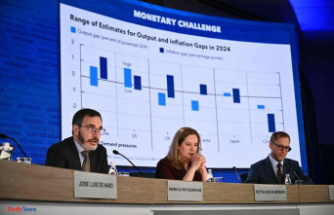According to provisional calculations, energy consumption in Germany fell by 3.5 percent in the first half of the year compared to the same period of the previous year.
The Energy Balance Working Group cited the weakening economic growth, the mild weather and significant energy savings due to the sharp rise in energy prices as reasons on Tuesday. Overall, domestic primary energy consumption in the first half of 2022 was 5950 petajoules.
On the one hand, the high energy prices have led to short-term energy savings, the AG reported in Berlin. On the other hand, they would also have triggered long-term savings because investments in reducing energy consumption were more worthwhile. The economic growth of 1.5 percent had only a small consumption-increasing effect. The AG pointed out that without the consumption-reducing effect of the mild weather, energy consumption would only have fallen by 0.5 percent.
Feed-in of renewable energy increased
According to the calculations, natural gas consumption fell by almost 15 percent. The energy experts see the milder weather and the high price level as the main reasons for this. In addition, the use of natural gas to generate electricity has decreased because renewable energies have made higher contributions, especially in the first quarter.
In the first six months, the consumption of mineral oil products was 7.3 percent higher overall than a year earlier, when it collapsed due to the corona pandemic.
The consumption of hard coal increased by 9.2 percent and that of lignite by 10.6 percent. Electricity generation from nuclear energy fell by a good half in the first half of the year due to the shutdown of three power plants.
The contribution of renewable energies rose by 4.7 percent in the first half of the year. Wind turbines increased by 18 percent, solar systems by 20 percent. The hydroelectric power plants, on the other hand, supplied one percent less electricity than in the same period of the previous year. Solar energy recorded an increase of 20 percent. Biomass fell by two percent. Energy-related carbon dioxide emissions increased by around one percent.












